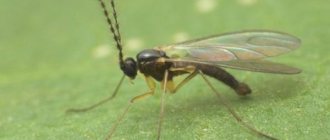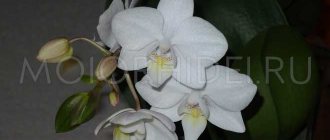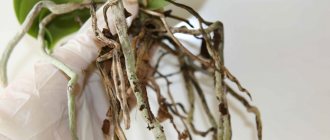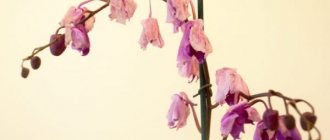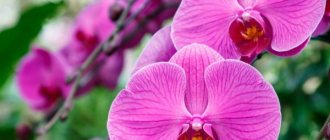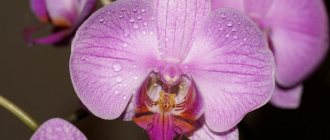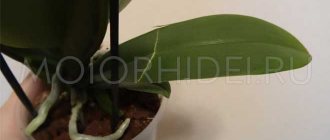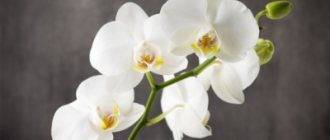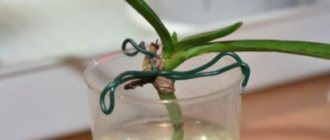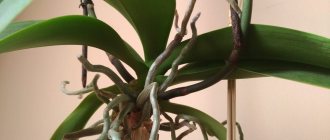Inexperienced orchid growers get scared if they find white roots on an orchid. Usually this phenomenon does not pose a threat to plants. But in some cases, a whitish coating indicates a disease. Orchid roots are very different from the underground parts of most houseplants. Part of the root system of a tropical flower is located above the soil surface. It is important to be able to correctly assess how healthy she is.
What healthy orchid roots look like
Representatives of the Orchid family are epiphytes. Their underground organs are covered with a special tissue - velamen. These are hollow, spongy cells that absorb nutrients from the air. In nature, they extract moisture from fog, dew and rain, and also serve as protection against overheating.
The root system performs several functions:
- absorption of nutrients and moisture;
- participation in photosynthesis processes along with leaves;
- attachment to the substrate and maintaining a vertical position.
If underground or aerial roots change shade, this should alert the gardener and force him to monitor the plant more closely. Normally, the root system of an orchid is silver-gray or light green. After watering, they darken slightly and acquire a more saturated color. But they should not turn dark brown or yellowish, with a white coating.
It is difficult to determine how healthy the underground part of an orchid is based solely on color. It may vary depending on the variety, substrate composition, fertilizing, and lighting. Therefore, it is important to consider the physical condition of the roots. They should be elastic, dense and smooth. If you press on them with your finger, they should retain their shape, remain smooth, without dents.
Another way to find out whether the underground organs of an orchid are healthy is to water the plant. A normally developing root system becomes green after water procedures, but the affected one does not change shade.
Anthracnose
Problems with orchid leaves also occur with anthracnose. Its characteristic feature is small dots on the leaves, which later increase in size, turning into spots, and then merge. Places of such mergers become black and appear depressed. At the last stage of the disease, yellow spots appear.
- High air humidity
- Stagnation of water in the leaf axils
- Poorly ventilated area
Prevention and treatment
To prevent the development of anthracnose, the plant should be kept at an air humidity level somewhere around 50-60%. In this case, the room should be ventilated periodically. And also when watering, you need to ensure that irrigation water does not accumulate in the leaf axils and cores of the pseudobulbs. At the first suspicion of anthracnose, the plant must be isolated from the rest so that the infection does not develop further.
To rid an orchid of anthracnose, you need to clean all affected areas of dead tissue, and treat the cut areas with charcoal or cinnamon powder. Additionally, the plant is washed with a solution of copper-containing fungicides at regular intervals. Any type of orchid is susceptible to anthracnose, but most often lycastas, miltonias, phalaenopsis, oncidiums and papiopediliums are affected.
Anthracnose on orchid leaves
Varieties of white plaque on orchid roots
Orchid growers often notice whitish dots, spots, mold deposits or tiny balls on the plant and even on the substrate. What causes these phenomena, how dangerous are they and how to get rid of them?
| Varieties of white plaque | Causes | Consequences and methods of combating |
| White dots on orchid roots | Spots appear on the root system, surface and depth of the substrate due to the use of hard water containing a large amount of salts for irrigation. Over time, they accumulate in the substrate and change its composition. | Due to soil salinity, air flow is disrupted. Filtered water should be used for irrigation. Change the soil. |
| White balls | They have a spherical or irregular shape and a size of up to 2–3 cm. On the roots of orchids, white balls are the result of the interlacing of filamentous processes of the mycelium. They can capture most of the substrate and roots of the orchid. | The mycelium deprives the plant of nutrients and can cause the death of the root system. |
| Mold | On the roots of orchids, white fluff is a consequence of the proliferation of fungi and their spread in the soil. | In order to prevent damage to the orchid, when caring for it, it is important not to allow the substrate to become waterlogged, especially when the temperature drops to +200 C. |
Danger to plants
Males are safe for the flower because they die after mating. Females are real parasites. With their mouthparts, they gnaw holes in the vine, sucking on it, drawing out life-giving juices, and building nests resembling cotton balls in the recesses of the leaves. In addition, they actively occupy stems and leaves, moving onto pots, windowsills and windows, covering everything with a cobwebby coating along the way. It blocks the stomata of plants, preventing them from “breathing,” spoils the appearance and depletes the flower.
In addition, having discovered a white sticky coating on an orchid, amateur flower growers often do not know how to treat and remove it correctly and may make mistakes when dealing with feltworm.
Female scale insects are extremely fertile. Laying is done up to 4 times a year. After 10 days, grayish larvae hatch and move quickly, choosing a place to feed. The insects are like fluff and can easily be transferred between plants even by weak air currents. They stick to the tender parts of the leaf, feed greedily and grow quickly. Before becoming an adult, they go through several molts.
This is interesting: there is an opinion that the wandering louse survives only on weakened plants - those that are dormant (in winter), have recently been exposed to disease, or have been attacked by other parasitic insects. And also as a result of improper care or depleted, long-unchanged soil.
Why do orchid roots turn white?
Changes in root color can be due to various reasons. When faced with such a problem, you should analyze the following points:
- Substrate quality. The development of the root system largely depends on the condition of the soil. A substrate that is unsuitable in composition and density causes a disruption in the supply of oxygen and also serves as a favorable environment for the proliferation of pathogenic microorganisms. Orchid growers change the substrate every 2–3 years.
- Water quality. If you water a flower with hard water, a whitish coating will appear on the roots. Rain, settled or melt water is considered more suitable. If it is not possible to use it, to soften the tap water, you can dilute wood ash (3 g per 10 l) or fresh peat (100 g per 10 l) in it.
- Illumination. A lack of light often results in the vulnerability of orchids to various diseases, primarily those caused by fungi. Plants should be kept in well-lit places and protected from direct sunlight, and in autumn and winter – supplemented with phytolamps.
- Humidity. Insufficient or irregular watering is a common cause of drying out, wrinkled roots and white discoloration. The first to react in this way to a lack of moisture are aerial roots. To avoid this, you should set up a watering schedule and adjust the air humidity in the room.
- Landing container size. If the orchid pot is too large, it becomes difficult to control watering and substrate humidity, and the likelihood of flooding and stagnation of moisture in the pot increases.
- Infections. One of the causes of damage may be bacterial rot; it can also cause a change in color in the underground part of the plant.
Treatment methods
If a white coating appears on the orchid leaves, targeted chemicals and home remedies for treating mold and white coating on orchid leaves can help get rid of it.
The process of combating the manifestations of the disease on phalaenopsis is:
- drying the soil in the pot;
- treatment with substances against aphids;
- creating proper conditions for the plant.
Home Remedies
Home remedies help get rid of disease on leaves and roots. Life-saving drugs are:
- ethyl medical alcohol 96%;
- hydrogen peroxide;
- ammonia.
Potassium permanganate is also useful. Phalaenopsis diseases are treated in the following order:
- Drain the soil in a pot with a diseased flower.
- Phalaenopsis leaves are treated with any potent substance. To do this, alcohol, ammonia or peroxide are applied to a cotton pad, then they are used to wipe the areas where powdery mildew appears.
- Phalaenopsis is left indoors for half an hour. During this time, the pests will die under the influence of the listed substances.
- The pot is transferred to the bathroom, and then the leaves are washed under the shower. The water should be at room temperature. To enhance the effect, sheets covered with a white coating are watered from a watering can.
Baking soda or citric acid is sometimes used as a septic tank. These substances are dissolved in water at the rate of 10 g per 1 liter of water, then the leaves are wiped with this solution as soon as white spots appear on them. Sanitation of the soil with a light solution of potassium permanganate can also get rid of the disease on the roots of the flower.
After processing, the flowers are transferred to a warm room, protected from temperature changes and drafts. Also avoid excessive waterlogging of the substrate.
Chemicals
The best chemicals to get rid of white plaque and spots on a tropical flower are preparations with bactericidal, fungicidal or complex effects, among which are:
- "Fitosporin". A universal drug that can relieve diseases of a bacterial or fungal nature.
- Bordeaux mixture. Composition of copper sulfate and lime, the effect of which is manifested in the fight against bacteria and foliar feeding.
- "Quadris". A broad-spectrum drug based on azoxystrobin, which has a therapeutic effect. It is used for preventive treatments.
- "Pure flower." A drug developed specifically for indoor plants, which, in addition to therapeutic treatment, has proven itself to be excellent for preventive purposes. It is used when spots on phalaenopsis just appear.
All listed substances are used in accordance with the attached instructions. After treating flowers for powdery mildew, wash hands and equipment with soap to avoid poisoning with the contents of phalaenopsis treatment products. It is also advisable to carry out the treatment outside the living space: on the balcony, in the yard or in the bathroom.
What to do if your orchid has white roots
The algorithm of actions for the formation of white plaque on the roots or substrate is as follows:
- Take fresh substrate and a suitable size planting container.
- Remove the plant from the old pot.
- Rinse the roots. Those that have dried out, rotted, become covered with white spots, balls, mold, cut off.
- If a fungal infection is detected, dilute any fungicide according to the instructions and soak the orchid roots in it for 15-20 minutes.
- Place the fresh substrate in boiling water for 15 minutes, then dry.
- Plant the plant in a new pot.
- For watering, use filtered or settled, soft water.
Symptoms of pest damage
This pest is difficult to confuse with anyone else. There are several signs of the appearance of an uninvited “resident” when it is difficult to detect:
- sticky leaves and white coating on the orchid;
- motionless white tubercles (clutches in which females hide);
- sticky drops on stems and leaves;
- mold or the beginning of rotting of the plant;
- changed size and color of its various parts;
- “marbled” leaves interspersed with pink and yellow.
Tips for keeping orchids
By observing the location of the roots of a tropical plant, you can draw a conclusion about how it feels. The upward-pointing shoots emerging from the planting container indicate a need for oxygen and sunlight. If they look in different directions, then they need water.
Orchids are so resilient that they can survive without roots or leaves. If the owners carefully monitor their condition, then, even without much experience, they receive healthy, flowering specimens.
